This article is the first half of my attempt to summarize the culture of the Minangkabau. This part focuses on the history and the geography of their homeland of West Sumatra.
In the popular Indonesian culture, Minang people are primarily famous for their traditional food. Any Indonesian town will have at least one rumah makan Padang (Padang restaurant, from the administrative capital of West Sumatra Padang).
They are also commonly considered as a people keen of emigrating. The Indonesian word merantau ‘leave one’s homeland to seek better fortune elsewhere’ has been indeed taken directly from the Minangkabau language.
Yet, the Minangkabau culture is first and foremost closely tied to their homeland of West Sumatra.
Alam Minangkabau : the Minangkabau world
In the Minangkabau mythology, men arrived in the region landing on boat on top of Mount Marapi. Then they populated the surrounding valleys that constitute the Minangkabau heartland :
- Agam : the valley between Mount Marapi and Mount Singgalang (around the town of Bukittinggi today)
- Tanah Datar : the valley south of Marapi to lake Singkarak (around the town of Pagaruyung today)
- Limapuluh Kota : the valley east of Agam (around the town of Payakumbuh today)
Agam, Tanah Datar and Limapuluh Kota were refered under the Minangkabau kingdom as the 3 luhak (districts). Together they form what is called the darat (heartland), which is the plateau region of West Sumatra highlands.
These 3 valleys are rice-producing region. Actually the darat has some of the most fertile lands of West Sumatra.
Outside the heartland, it’s the rantau or the frontier area of the Minangkabau world.
If the darat is the traditional home of the Minangkabau, the rantau is its window to the world. The adat (tradition) comes from the darat and the agama (religion, here Islam) came from the rantau. Hence the saying agama mendaki, adat menurun (“religion climbs, tradition descends”).
The darat is where the adat is the strongest, while the region of the rantau were subject to more external influence.
The rantau
The plateau of West Sumatra is the core of the Minangkabau world. Yet, neighbouring regions, although out of the darat, have been largely influenced and settled by Minangkabau through the centuries.
The immediate neighbours of the heartlands, such as the Maninjau region or the Solok plain are clearly Minangkabau areas today.
The eastern frontier
From the highlands of Central Sumatra, home of the Minangkabau, flow major Sumatran rivers that snake through swampy forests to finally reach the east coast of Sumatra and the Strait of Malacca : the Siak, the Kampar, the Indragiri and the Batanghari rivers.
Those rivers constituted important trade routes in the history and Minangkabau traders have settled along them for centuries. As the settlers established themselves further east, they mixed with the local populations (mostly Malay settlers).
This is through this process that Minangkabau settled in some parts of peninsular Malaysia. Today, descendents of Minangkabau form the main ethnic group in the Malaysian state of Negeri Sembilan.
Sumatra’s west coast
It is only in 1841 that the first actual road from the highlands to the coast was opened through the Anai Gorge (near the modern town of Padang Panjang).
Previously, the only way to reach the coast from the highland was through perilous paths in the forest (which by then were populated by elephants, rhinos and tigers). Porters could reach the harbor on the coast in about 10 days (Colombijn). Buffalo could take this road but not horses.
These paths were also nearly impossible to use in the rainy season. So for practical reasons, most of the trade was undertaken via the rivers flowing east, at least if when peace was maintained in the Strait of Malacca.
The climate of the west coast is also less favorable to agriculture than in the highlands. The coast is battered by the monsoon and little land can be converted in ricefields.
Outside the main harbors, villagers west of the moutains were usually focused on fishing and salt making. They were generally poorer than those of the highlands, yet their organization and culture was influenced by their more prosperous neighbours.
Minangkabau mythology
The cosmogony of Minangkabau has been transmitted through the traditional tambo (chronicles). The version below is taken from T.Abdullah basing himself on a 19th century manuscript (see C.Holt in sources).
God created the universe from the Light of Muhammad (Nur Muhammad), a recurrent concept in Islamic mysticism. From the Light, angels and the first man Adam emerged.
At this time, the Earth was still in the process of perfection, but God forced Adam and his offspring to live there.
The story of Minangkabau starts with the descent of Iskandar Zulkarnain (“Iskandar with the Two Horns”, believed to be Alexander the Great) on Earth. The face of the world was then expanding as the hills and moutains had started to emerge.
Iskandar founded the first kingdom, took a wife (a nymph sent by God from paradise) and later had 3 sons. The princes latter married 3 princesses from the kingdom under the sea that had emerged from the water.
One the prince, Maharadja Diradja, established his supremacy over its 2 brothers before the 3 princes parted. Maharadja Diradja sailed with his followers to the Land between Sunset and Sunrise.
At the end of their journey, they landed on the island of Perca, which is the top of Mount Marapi.
Gradually, the water surrounding Mount Marapi receded and men settled the freshly emerged lands.
Their first settlement was Pariangan, a village of Tanah Datar, south of Mount Marapi. But over the time, men populated the region of Tanah Datar, Agam and Limapuluh Kota.
An ethymology of the word “Minangkabau”
The most famous explanation is provided by a popular legend.
According to the story, the Minangkabau heartland was facing an invasion by the Javanese army. But instead of a battle, the chiefs on both sides decided to hold a fight between two buffaloes.
Shall the Javanese’s buffalo win, and the Minangkabau land would surrender, otherwise the Javanese army would retreat without fighting.
The Javanese brought a huge buffalo while the Minangkabau picked a small calf. In secret, they had starved the calf beforehand and tied a sharp iron point to its nose (other versions mention ground horns as sharp as knives). Once set free, the calf ran straight towards the opposing buffalo who did not considered the calf a threat. The calf tried to suck the buffalo’s milk and injured its belly, eventually killing it.
To commemorate this event, the West Sumatran named their land and people “Manang Kabau” (winning buffalo).
Despite being fully accredited among the Minang people, this myth is probably just a folk’s tale.
From the 13th century, the Javanese through Singosari and then Majapahit did indeed tried to conquer Minangkabau. But in the end, it’s the prince coming from Java (Adityawarman, son of a Sumatran mother though) that became the most famous king of Minangkabau.
Linguists such as the Dutch Van der Tuuk derived the name instead from the ancient Malay “pinang kabhu“, an archaic expression meaning “original home” (Loeb).
Minangkabau history
The buddhist era ( – 14th century)
For centuries, what would become the Minangkabau land were a rice-growing region, ruled by more or less distant Buddhist kings.
- The most ancient kingdom we know about is probably Melayu that flourished in the 7th century AD.
Historical materials from this era are pretty scarce but the current most popular theory describes Melayu as a kingdom founded around the Batanghari river, with its capital in present-day Jambi province.
Melayu likely had an influence on the future Minangkabau heartland, which was already an important gold producing region. The Minang language is closely related to Malay (which was originally the language of Melayu. Modern Malaysia was originally settled by a Melayu prince from Sumatra).
- In the late 7th century, the kingdom of Melayu seems to have been absorbed by the rising Srivijaya kingdom, which center was near present-day Palembang on the Musi river. From the 7th to the 11th century, Srivajaya dominated most of Sumatra but the west coast.
It is important to keep in mind that by then, Sumatra was mostly covered by forests and kingdoms actually controlled only a few population centers as well as strategic harbors.
- In the 11th century, Srivajaya and the Sailendra dynasty declined primarily due to raids led by the Chola kings from South India. The center of Srivijaya likely shifted from Palembang to Muaro Jambi (this is assumed because of the presence of significant archeological ruins dated from this period in Muaro Jambi while nothing was found for the same period near Palembang).
Gradually, the empire of Srivijaya dislocated and new power emerged, like the kingdom of Dharmasraya, which more or less fit the ancient core of Melayu kingdom ie. Jambi and West Sumatra. Dharmasraya was led by the Mauli dynasty, whose members are Mahayana-Vajrayana Buddhists.
- In the late 13th century, the king Kertanegara of Singhasari kingdom (center modern day Malang in East Java), launched the Pemalayu expedition to conquer the Malayu land. The immediate results of this expedition is not very clear, but for sure Javanese influence have increased over time.
Archeological evidence and oral tradition also indicates that around the 12th or 13th century, traders from South India, chettis, entered Tanah Datar and established themselves near Pariangan.
The foundation of the Minangkabau kingdom (1347)
In 1347, king Adityawarman from Dharmasraya moved the capital of its kingdom from the upper Batang Hari river to a new site near Suruaso and founds Pagaruyung (not the same as modern Pagaruyung, the ancient one was near Kumanis).
This move was probably a way to ensure a tighter control on the gold mines of the region (mainly the valleys and hills of the Selo, Sinamar and Sumpur rivers).
Adityawarman’s mother was a princess from Dharmasraya and his father a noble from Majapahit (the great Javanese empire from the 14th to 16th century). He was raised in Majapahit court (near modern day Trowulan in East Java).
This date is the foundation of the classical Minangkabau kingdom (at least this is the most popular theory), which was thus the heir of the old Melayu kingdom and had ties to the Majapahit kingdom of Java.
Adityawarman was a devotee of Tantric Buddhism.
His reign lasted until at least 1375 and is better known that most of the other kingdoms we have discussed previously because he left many stone inscriptions.
According to Dobbins : “the Minangkabau element in the kingdom remained extremely important and it is under the rule of Adityawarman that Minangkabau began to develop its own higher culture, with its own art, language and script in which Javanese and Malay elements were synthesized“.
The establishment of the adat (15th – 18th century)
The history following the reign of Adityawarman is almost entirely unknown until the 16th century.
The main source for this period is the Minangkabau oral tradition, passed down in the tambo (traditional chronicles). Of course, many versions exist but all of them refer to 2 half brothers : Datuk Ketamanggungan and Datuk Perpatih nan Sabatang.
They are the adat-givers of Minangkabau, the source of Minangkabau traditional rules and orders. They are believed to have introduced (or at least formalized) various reforms.
- The old settlements were transformed into nagari (Minang language, in Indonesian the word is negari) with their independent political and judicial authority.
- Nagari were divided into several suku (clans, more exactly lineages).
- Suku were now to be headed by a penghulu (community leader)
The next significant episode is the division of the Minangkabau nagari between 2 political traditions (the 2 laras).
Dobbins proposes the following theory : at Adityawarman’s death, there was a schism in the society, that led to a civil war.
- One side followed the tumanggung (a high functionary) and identified themselves with the royal family, the hierarchy in the village and the gold trade.
- Another followed the patih (the chief minister) and identified themselves more with pre-Javanized Minangkabau and the matriliny (the royal dynasty was patrilinear as opposed to the peasants).
After the conflict (that was won by the royal followers), all the nagari adhered to one of the two traditions (laras) :
- The Koto Piliang tradition (that had recognized the royal status) established a hierarchy between the clan leaders (penghulu). Its center was Sungai Tarab. For instance, they recognized the position of a puncak (chief).
- The Bodi Taniago tradition (that refused the new king) was more equalitarian (all penghulu considered equal). Its main center was Lima Kaum in Agam.
The main gold villages and the villages on the gold exporting routes were adherent of Koto Piliang. Official offices appeared along this route, like the Tuang Gedang of Batipuh (between Tanah Datar and the harbor of Pariaman).
The royal family retained an influence mostly on the regions east of the Minangkabau heartland : in the valley of the Sinamar river (near Buo) and Sumpur river (near Sumpur Kudus). This position is strategic to access the rivers (especially the Indragiri) flowing east to the coast of Sumatra.
From the 15th and the rise of the Sultanate of Malacca, the Minangkabau royalty established itself as an important trading partner for gold with what was then the main power in the region.
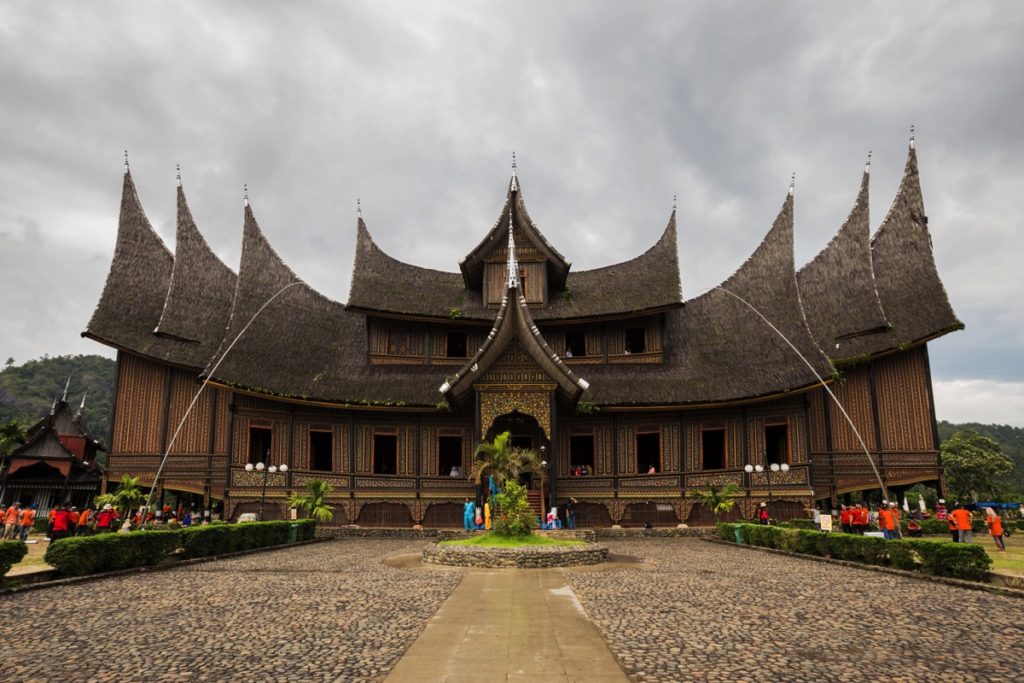
Batusangkar palace
At one point, the reason why being not very clear, the royal function was split in 3, between members of the royal family :
- The Raja Ibadat (‘King of Religion’) at Sumpur Kudus
- The Raja Adat (‘King of Tradition’) at Buo
- The Raja Alam (‘King of the World’) at the ancient Pagaruyung (near Kalimanis).
Very little is actually known on the royal courts of this time. A Portuguese emissary of the Dutch called Thomas Dias visited the old Pagaruyung in 1684. He described the court ceremonial as largely inspired by those of the Malacca’s court.
In Tanah Datar, the royal family was likely superseded by the tumanggung who became a Bendhara (a title inspired by the Muslim Sultanates). Sungai Tarab and Lima Kaum, each leaded by a Bendhara, competed for the supremacy in the area.
When the Dutch VOC started to trade for gold in the 17th, they dealt directly with the Bendhara of Sungai Tarab and not with the Raja Alam. The king was regarded as a kind of sacral figure, with some magical powers though.
In the late 17th century, it seems that the royal family returned to Tanah Datar and eventually replaced the Bendhara of Sungai Tarab. A new Pagaruyung was founded near Suruaso : this is the modern Pagaruyung.
A new triumvirat was established :
- Raja Ibadat was the Raja Suruaso
- Raja Alam was the Raja Pagaruyung
- Rajat Adat was a title given alternativaly to one of the first two rajas’ wife.
This system lasted until the fall of the royal dynasty in the hands of the Islamic revivalists (the Padri movements) in 1815. Given that most of the royal family was slaughtered and its palaces burnt, very few is known from the new Pagaruyung when it was the kingdom’s capital.
It is important to note that the fate of the royal family had been closely tied to that of the gold trade, from which they extracted their, relative, wealth. The Padri only dealt the final blow to a royalty that was already severely declining in the late 18th century with the depletion of the gold sources.
So if we try to summarize :
– 1347-1375 (14th century) foundation of the classical Minangkabau kingdom by Adityawarman
– 15th-17th century : the heartland is divided between independent nagari headed by penhulu. The royalty center is east of Tanah Datar and mostly focused on the gold trade.
– Late 17th century : the royalty moves back to Tanah Datar, but the region is still mostly under the control of the nagari.
– 1815 (early 19th century) : end of the Minangkabau kingdom.
The advent of Islam (16th century)
Despite the presence of Buddhist kings, “in Minangkabau, peasant culture rested on a substratum of animistic beliefs which were still flourishing in the 19th century” (Dobbins). The key religious figure was that of the shaman called pawang.
As other ancient Malay people, Minangkabau believed in the dualism of the soul. Each person had a part of its soul, the semangat, that could disappear or be captured by evil spirits. Most objects of the environment were believed to harbour spirits, and sacrificial offerings were made to placate evil spirits.
As we have seen, Minangkabau had been integrated in a global trade network for centuries. It is through these foreign influences that Islam (as had Buddhist and Hindu influence earlier) will establish from the 16th century).
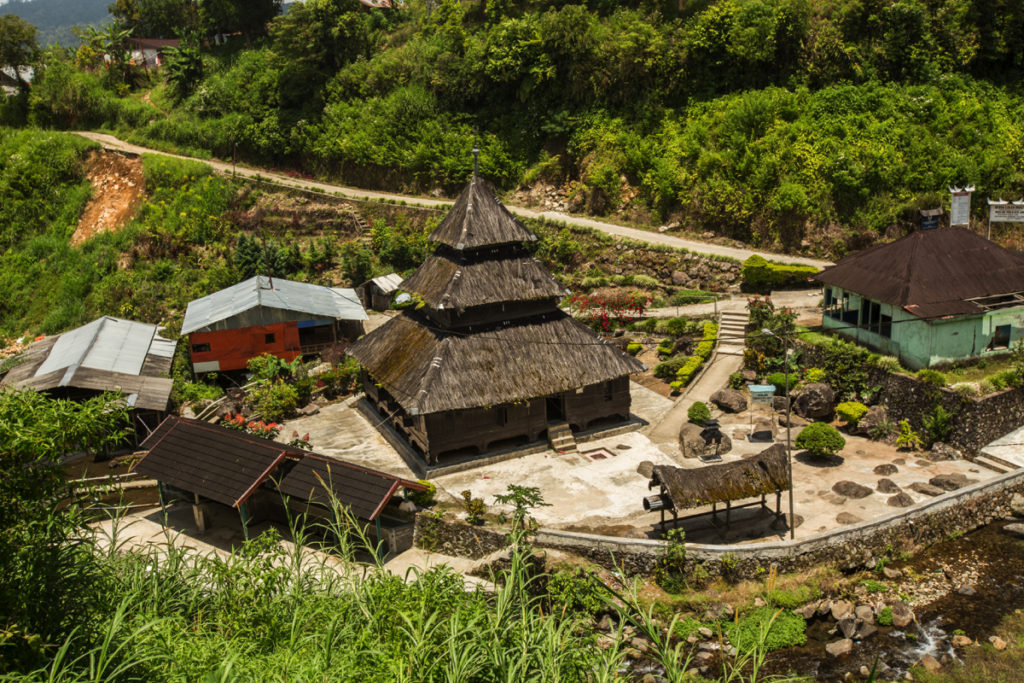
Kayu Jao old mosque (Mesjid Tuo Kayu Jao), which existence is attested from 1599
From the west : Gujarati and Acehnese
Tiku harbor was Islamized in the early 16th century under the influence of Indian Muslim Gujarati traders
Gradually, the Acehnese came to dominate the harbors on the west coast. Pariaman and Ulukan (that will become the first known Islamic center in Minangkabau) converted.
In 1575, the son of the sultan of Aceh was appointed panglima (governor) of the port of Pariaman. Under the reign of Sultan Iskandar Muda (1607-1636) Aceh fought to channel all the pepper trade of Sumatra in its capital of Kotaraja. To do so, they tried to maintain an absolute control and monopoly on the main harbors of Sumatra.
Acehnese control on the main western harbor started to decline in the 1640s, but their place was soon taken back by the Indian traders of the Gujarat, also Muslim.
According to Dobbins « as late as 1761 Islam was largely confined to the leading broker families of the ports ; Islamic law, particularly that connected with inheritance, proved suited to their needs, providing them with an alternative to the matrilineal system of inheritance of the uplands. The coastal peasants, however, remained attached to their animistic beliefs and to their own religious specialists ».
From the east : the influence of Malacca
In the highland, Minangkabau traders (which were closely tied to the royal family) have sailed down the rivers of Sumatra to sell gold and pepper and buy clothes in the Strait of Malacca for centuries.
As the Sultanate of Malacca emerged as the leading regional power, its trading partners gradually adopted Islam. This process was well documented for the states of Kampar and Indragiri (that were established on the estuary of the river Kampar and Indragiri, directly facing Malacca across the strait).
It is possible that the Minangkabau elements involved in the gold trade had followed the same path. In 1684, a Dutch mission in the highland reported that the raja and his family had converted to Islam from the 16th century.
According to Dobbins : “yet there can be no doubt that this conversion to Islam by members of the Minangkabau royal family – and by other officials of the realm – did not cause them to abandon many of their earlier beliefs and practices“.
As in several other places of Indonesia (for instance Java), Islam was added to the existing beliefs. Hence it was a syncretic form of Islam, arrived by the mean of trade that thrived in the Minangkabau world.
For instance, in 1825 a Dutch inquirer that had met the Raja Alam of Pagaruyung reported that the Raja still claimed to detain magical power he could use against his opponents : for instance cause a crop failure or epidemics.
According to Dobbins, in the early 19th century there were still whole village left untouched by Islam. This claim is confirmed by the accounts of the Dutch writer Willinck that claimed that large parts of the highlands were still unconverted by the late 18th century (Loeb).
Early Islamic times
In the highlands, Islam expanded mostly through the existing network of the surau (men houses).
Several surau became progressively teaching places for various Muslim Sufi brotherhoods (tarekat) and were placed under the leadership of a tuanku (religious teacher).
In the ancient tradition, the Alam Minangkabau was a harmonious world of Islam and adat. Hence the aphorism “adat is based on sjarak (religious law), sjarak is based on adat.
Adat was supposed to maintain the harmony of society, while sjarak was intended to achieve harmony between the self and the cosmic order. The unity of the nagari was symbolized by the existence of one balai and one mosque.
The VOC and the development of Padang
Dutch merchants from the VOC were first attracted by Central Sumatra for its pepper, but soon they grew aware the flourishing gold trade in the highlands.
As Europe became saturated with pepper in the late 17th century, it’s the gold that will motivate the Dutch. Minangkabau gold will be very useful to the Dutch when they came to mint their own currency for their colonial empire.
The Dutch VOC first bought Minangkabau gold in 1651 in Pariaman but the harbor was still controlled by the Acehnese who refused their presence.
So the Dutch were pushed further south and they established themselves in Padang from 1663, which was then only a small fishing village.
With the growth of trade, Padang would be soon settled first by people from the other parts of the coast and then by people from the Singkarak-Solok region.
Padang was almost entirely destroyed by an earthquake in 1797.
The Padri War (19th century)
The economic turnaround
Late 18th century was a time of profound economic upheaval in Minangkabau.
Traditionally, the economic power rested in the hands of the villages of the plains, rich in ricefields ; as well as the gold traders, associated with the king of Pagaruyung in Tanah Datar.
But by the late 18th century, gold supply was rapidly depleting while new outside demand for crops well suited for the previously poorer hill villages increased.
The district of Agam and Limapuluh Kota were transformed by the impact of the trade, first in cotton, gambier and cassia and then in coffee.
Soon, Agam and Limapuluh outstriped Tanah Datar as the main trading region of the Minangkabau heartland.
These new revenues allowed several Minangkabau Muslim traders to undertake the pilgrimage in Mecca.
First Islamic revivalist movement (1784 – 1803)
Prior to the actual Padri movement, a first Islamic revivalist movement emerged in Kota Tua in Agam, a stronghold of the Suatarriyah tarekat (Sufi brotherhood).
This region had fully experienced the economic changes I had described above. It had grown rich thanks to cassia and coffee.
But the developing trades brought along increasing commercial disputes between traders from different villages. And the traditional method of arbitration through a council of representative was not very efficient to deal with them.
Besides that, the society seemed unable to organize a secured trading network as banditry was widespread. Markets were also places prone to cockfighting, gambling, tuak (palm wine) drinking and opium smoking.
In short, the new economic paradigm had brought disturbances to the society and the traditional mode of government seemed now unfit.
A religious leader from Kota Tua, Tuanku Nan Tua proposed to implement the Islamic law, which is quite comprehensive on trade matters. Along with his disciples, he started to promote his teaching in the neighbouring villages and alongside advocated for conversion to Islam.
The campaing was rife with clashes, especially as he targeted in priority bandit villages, but his method seemed to brought some success to pacify the area.
They were especially successful in the hill villages, in which the traditional village code, devised for a society of rice growers, in which the most precious thing was the ricefields, was deemed unfit as the main activity had become trade in coffee and cassia.
The Padri movement (1803 – 1819) – 1 – Inception
Successful Minangkabau coffee traders kept on undertaking the pilgrimage to Mecca. In 1803, some witnessed the arrival of the Wahhabis in Mecca.
3 of them were especially impressed both by their message (the return to the Islam of the time of the Prophet and its Companions) and their violence.
Latter they became known as the Padri, “the men of Pedir”, from the harbor of Pedir in Aceh from where pilgrims set off for Mecca. Upon their return, they launched a large revival movement in Agam.
The best known of the 3 Padri is Haji Miskin, a former student of Tuanku Nan Tua (the leader of the previous revivalist movement). He soon started to preach reform in the village of Pandai Sikat.
After some times, he ended up burning the balai (council hall) of the village.
Yet this arson shall be interpreted cautiously. “The notion of the movement solely as an uncompromising attack on the penghulu system is quite misleading, although this interpretation still holds sway in even the most recent literature” (Dobbins).
From the very beginning, Padri associated themselves with some of local leaders (the penghulu).
At some point, the Padri movement turned much more violent especially under the influence of a leader called Tuanku Nan Rinceh from Bukit Kamang.
Tuanku Nan Rinceh started to turn villages against others that refused to submit to the Padri teachings. This strategy was especially effective in the hill villages, traditionally poorer because their land was less suitable for rice and generally adherent to the egalitarian Bodi Caniago tradition. Now rich with coffee, such villages often saw the occasion to take revenge on the plain villages (usually from the Koto Piliang tradition) that formerly looked down on them.
This is how you can explain the attack of the villages of Tilatang, Kurai and Padang Tarab (the latter being reduced to ashes) by Bukit Kamang, Sala, Magek and Kota Baru (that were freshly converted Padri villages).
Soon, the Padri movement turned into a real civil war, with villages fighting other villages but also poor members attacking the richer families of their own village. At some points, different Padri leaders waged war against each others.
The Padri movement (1803 – 1819) – 2 – Padri apogee and the Dutch intervention
- The Padri movement started in Agam and despite local resistance it seems that by 1821, all Agam was solidly Padri.
- In Limapuluh Kota, the Padri movement development is not well known but it seems that villagers embraced Padri without much fuss and little internal warfare was recorded. The same things appears to be true for Maninjau and Solok area.
- In Tanah Datar, the Padri faced much more resistance.
The main figure of the Padri in Tanah Datar was Tuanku Lintau, that returns to his home village of Lintau in 1813 to reform the morals of the valley. He was especially critical of the royal family that leads an unislamic way of life.
If Tuanku Lintau managed to convert his home village of Lintau and several villages in the hills, almost all the main ricefield villages were hostile to him. Disorder rapidly spread in the valley.
Eventually Tuanku Lintau lured the royal family into a trap and attacked them in 1815. The two sons of the Raja Alam were killed but the 70 years old Raja and his grandson escaped.
Tuanku Lintau attempted to gain legitimacy by marrying a daughter of the late Raja Ibadat (who had died in 1817) and assumed the consolidated office of Raja Adat (who had fled) and Raja Ibadat.
But resistance to him persisted in the plains. Despite successful raids, the Padri never gain full control over Tanah Datar and Batipuh remained a haven for the Padri opponents. By 1818, Pagaruyung had been torched 3 times.
At this point the Padri, if they don’t fully control the Minangkabau heartland, dominate it.
Yet Padri movement was a collection of local leaders. None of them ever had unchallenged dominance over a large territory. Most of the leaders control only a handful of villages
- The Padri imposed in the village they controlled the appointment of a kadi (judge) to settle religious matters and of an imam. The penghulu councils were not abolished though.
The other aspect of the Padri rule was a strong Wahhabi-inspired puritanism : cockfighting, gambling, alcohol, opium and sirih (arecca nut) were banned. Whites clothes had to be worn, silk clothing and gold jewelry were prohibited. Women had to cover their face and men grow their beard.
- From 1818, colonial officials started to fear an upcoming attack of the Padri to Padang. Eventually in 1821, they signed a treaty of assistance with the survivors of the royal family.
By March 1822, Dutch soldiers occupied Pagaruyung and by July Pandai Sikat was taken.
But many pockets of resistance subsisted like the eastern part of Tanah Datar or the Empat Angkat region of Agam. Tension gradually decreased and in November 1825 a peace treaty was signed between the Dutch and emissaries of Tuanku Nan Rinceh and Tuanku Lintau.
By then, virtually all the Dutch troops had been removed from West Sumatra anyway as a large rebellion had broken out in Java.
Until 1831, Minangkabau were relatively at peace and the original puritanism faded out even in strongly Padri villages.
In 1831, as the rebellion in Java had been smashed, a new resident was appointed in Padang and military operations resumed in the highland. Agam was in full control of the Dutch by July 1832 and Limapuluh Kota by October.
In 1833, Tuanku Lintau is murdered and Tuanku Nan Rinceh died. This was the end of the Padri movement in the heartland.
Yet, the Padri movement had blossomed north of Agam in the valley of Alahan Panjang. The center of the Padri movement there was the village of Bonjol leaded by Tuanku Imam Bonjol. Bonjol will be taken only in 1837, and Imam Bonjol exiled. His face ornated the old 5’000Rp bill.
The figure of Imam Bonjol would latter become a national hero and his face was on the 5’000Rp bill, prior to the emission of new bills in 2016 somethings.
The Padri consequences
Padri were eventually overpowered by the Dutch, but their movement had deep consequences on the Minangkabau society.
- First of all the monarchy of Tanah Datar had been destroyed.
- Second, the ancient division between the two laras of Kota Piliang and Bodi Caniago was virtually erased.
“One of the chief claims of the movement was to blot out past prestige systems, reorganize groupings and equalize the balance of power inside Minangkabau. In this respect, they were so successful that Dutch anthropologists working in the area after the end of the Padri War found few differences that were significant in the systems of the two laras” (Dobbins).
- The expansion of the state of Bonjol north of Agam led to the conversion to Islam of the southern Batak tribes of Mandailing and Angkola.
According to Abdulah, when the war ended, “it was obvious that the Padri leaders had not substantially changed Minangkabau political and social structure. They did not completely reform the heterodoxy of the Minangkabau religious system. They did however strengthen the social force of religion and enlarge its scope throughout the social system“.
The colonial era (1832 – 1945)
Despite having supported the ‘Tanah Datar side’ during the Padri war, the Dutch established their commercial center for the highlands in Agam in Fort de Kock (now known as Bukkitinggi) from 1827.
In parralel, Dutch seeked to implement a system of administration similar to the one they had set in Java.
The highlands were first divided in two regencies (Tanah Datar and Agam first then in 1832 Limapuluh Kota got its own regent).
The nephew of the last Raja Alam (who died in 1825) was appointed regent of Tanah Datar in 1823, but he had then lost all power and he was in essence a colonial functionnary.
The Dutch nonethelss rebuilt the royal residence at Pagaruyung.
Debates about the proper practice of Islam in regars to the adat continued after the Dutch takeover.
West Sumatra will be in the frontline of the modernist Islamic movements of the 20th century, especially advocating better education.
Minangkabau independence leaders will play a major role in the constitution of the modern state of Indonesia. The first vice-president, Hatta, was Minangkabau.
Sources
- Edwin Loeb, 1934, “Patrilineal and matrilineal organization in Sumatra – Part 2 The Minangkabau”, American Anthropologist, Volume 34.
- Taufik Abdulah, 1966, “Adat and Islam : An Examination of Conflict in Minangkabau”, Indonesia No.2, Cornell University Press.
- Taufik Abdulah “Modernization in the Minangkabau World: West Sumatra in the Early Decaes of the Twentieth Century” in Claire Holt, Culture and Politics in Indonesia, 1972, Cornell University Press.
- Christine Dobbin, 1977, “Economic Change in Minangkabau as a Factor in the Rise of the Padri Movement, 1784-1830”, Indonesia No.23, Cornell University Press.
- Christine Dobbin. 1983. Islamic Revivalism in a Changing Peasant Economy: Central Sumatra, 1784–1847. Scandinavian Institute of Asian Studies.
- Freek Colombijn, 2005, “A Moving History of Middle Sumatra 1600-1870”, Modern Asian Studies 39.
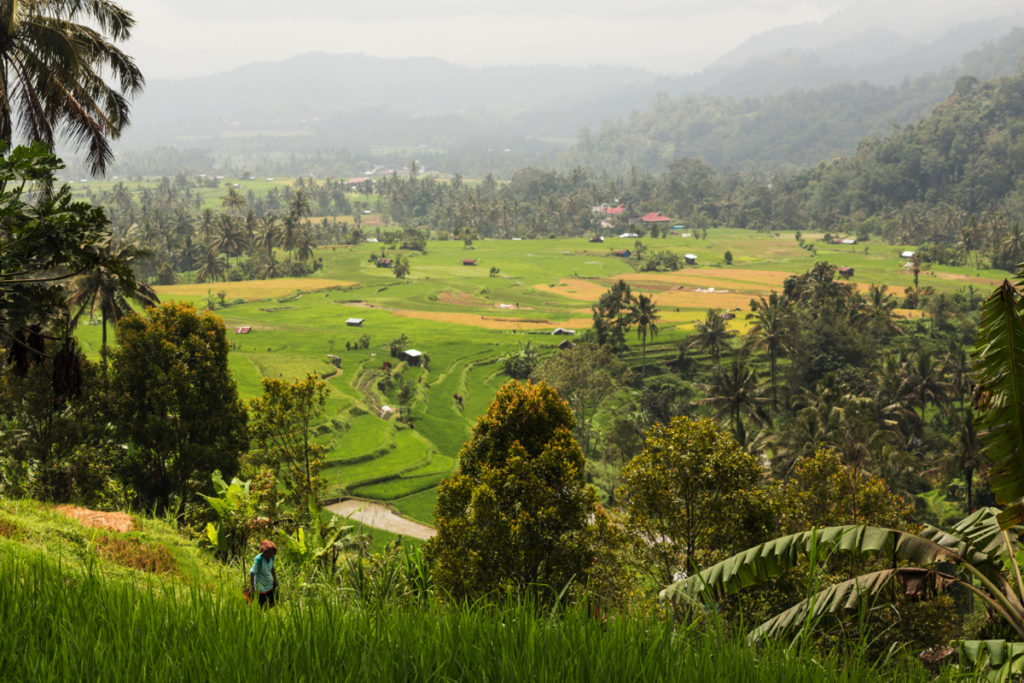

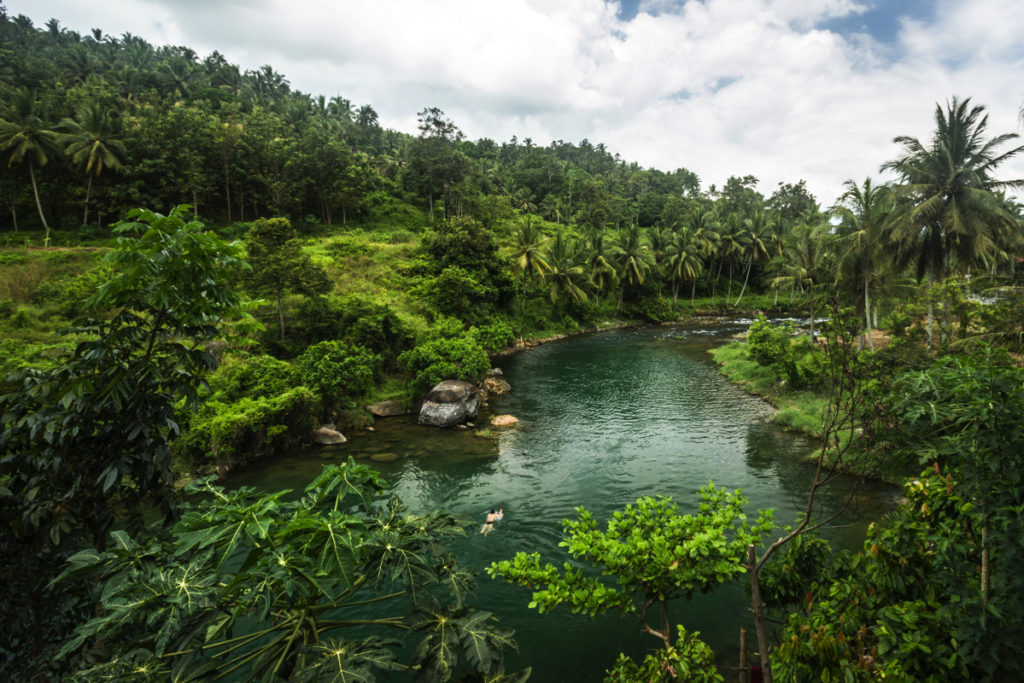
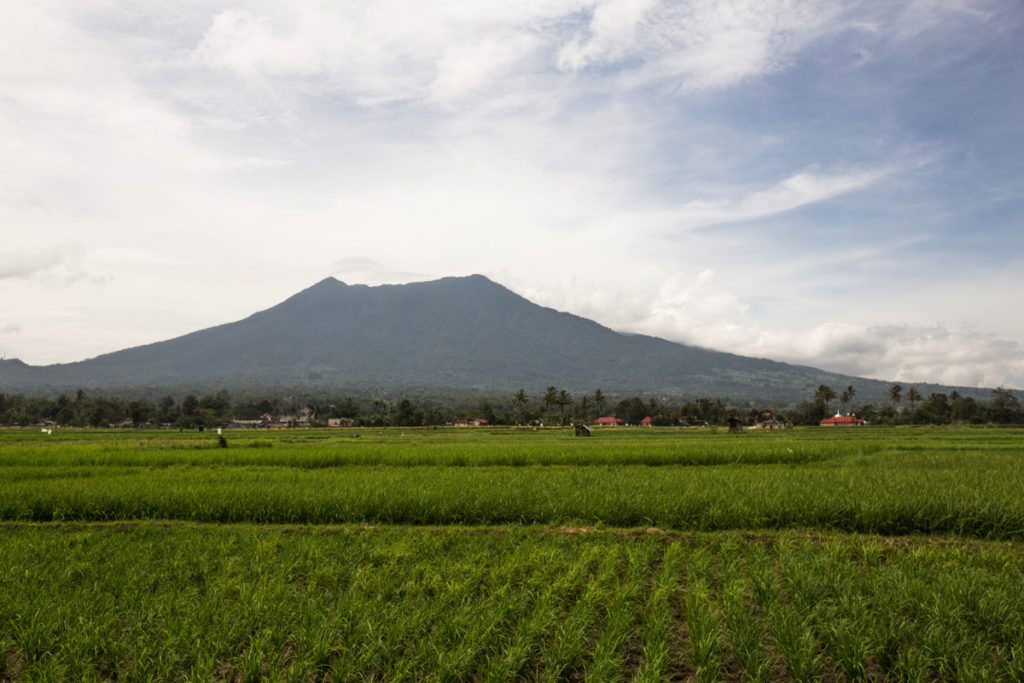
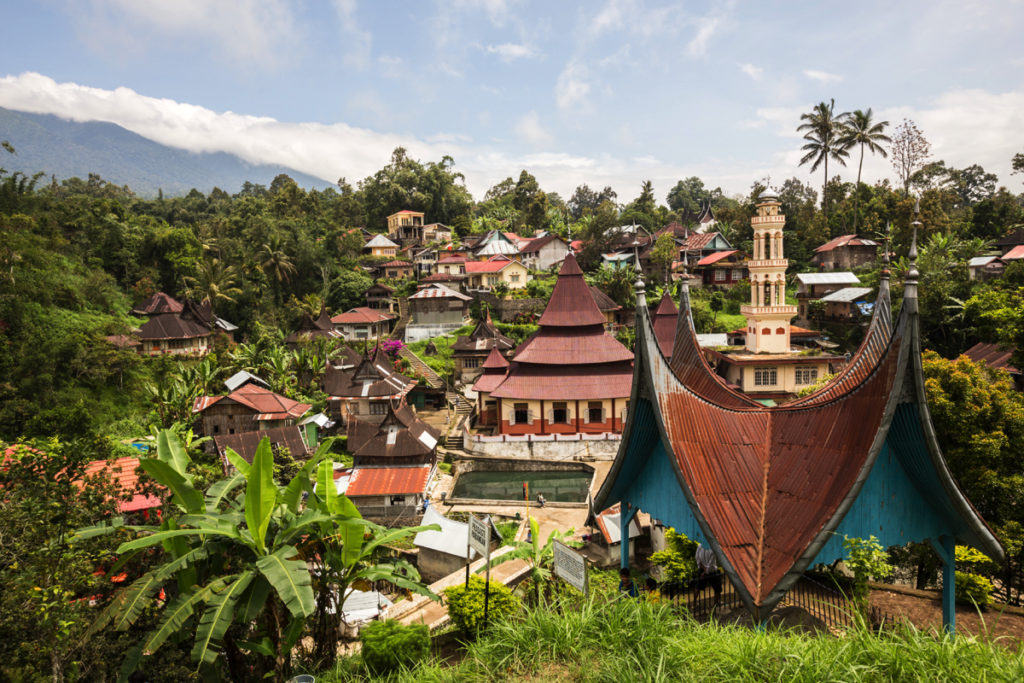
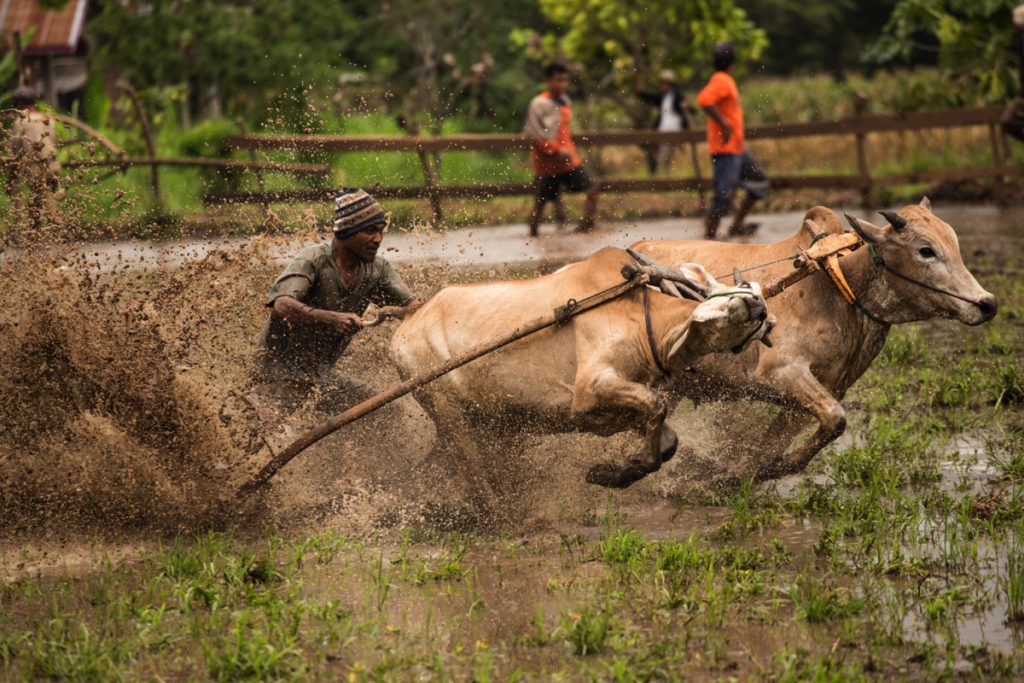
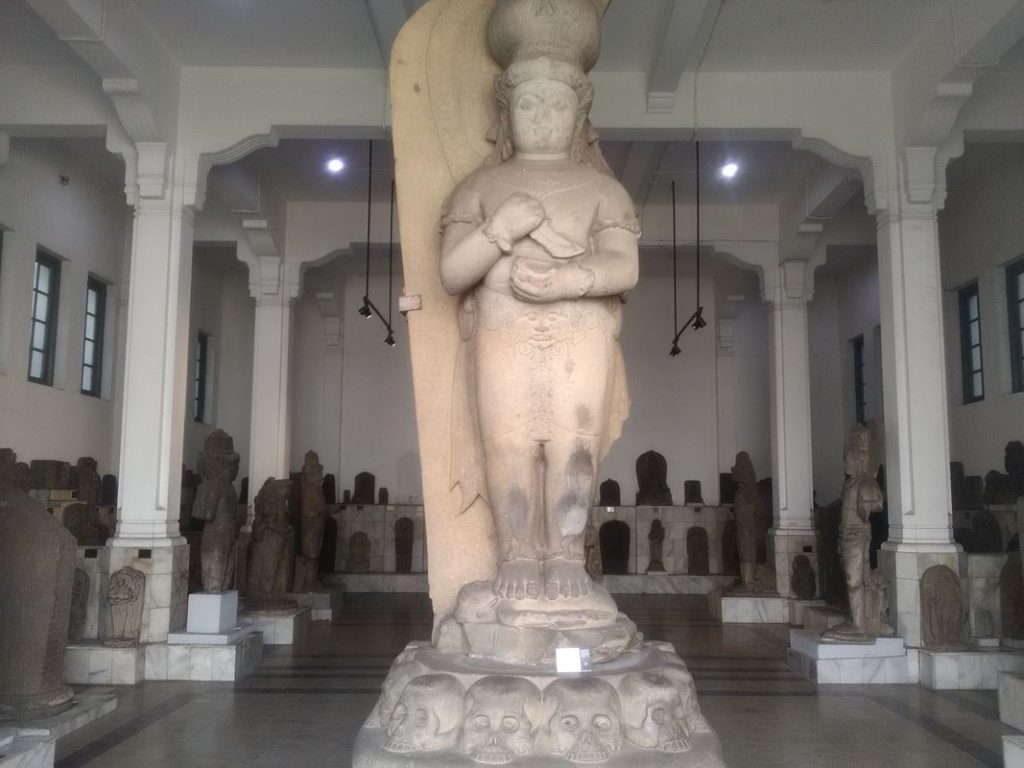
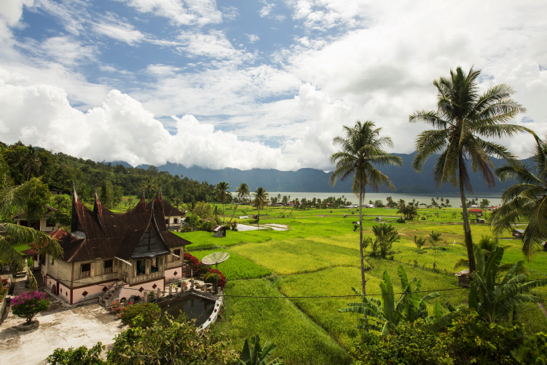
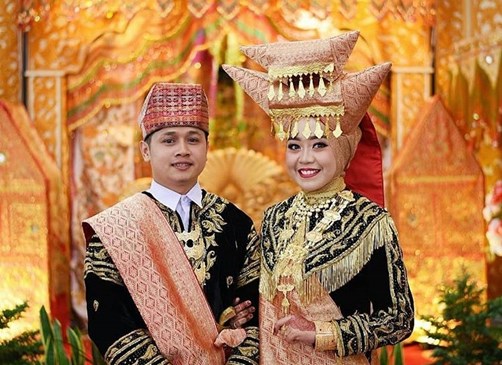
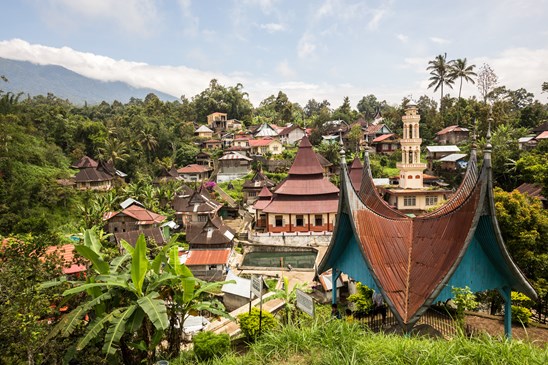
Leave a Reply